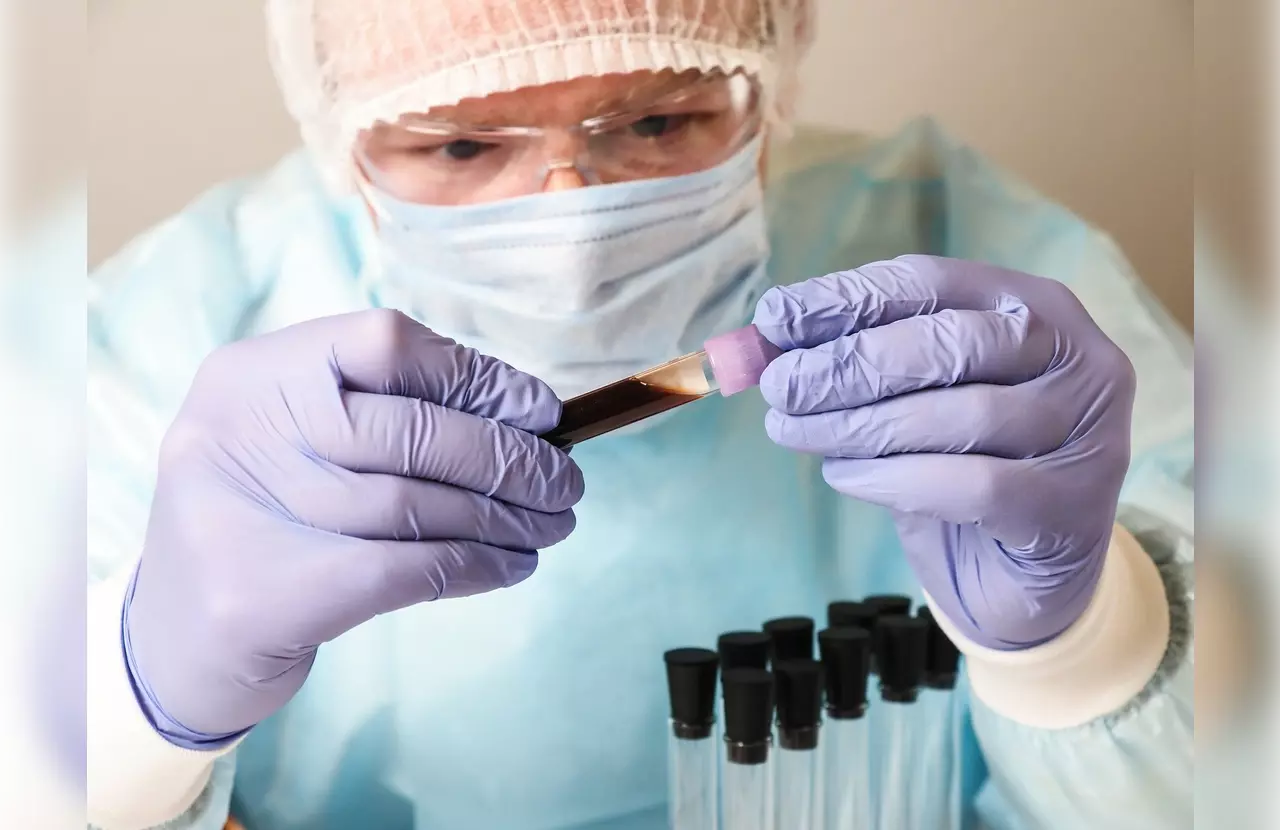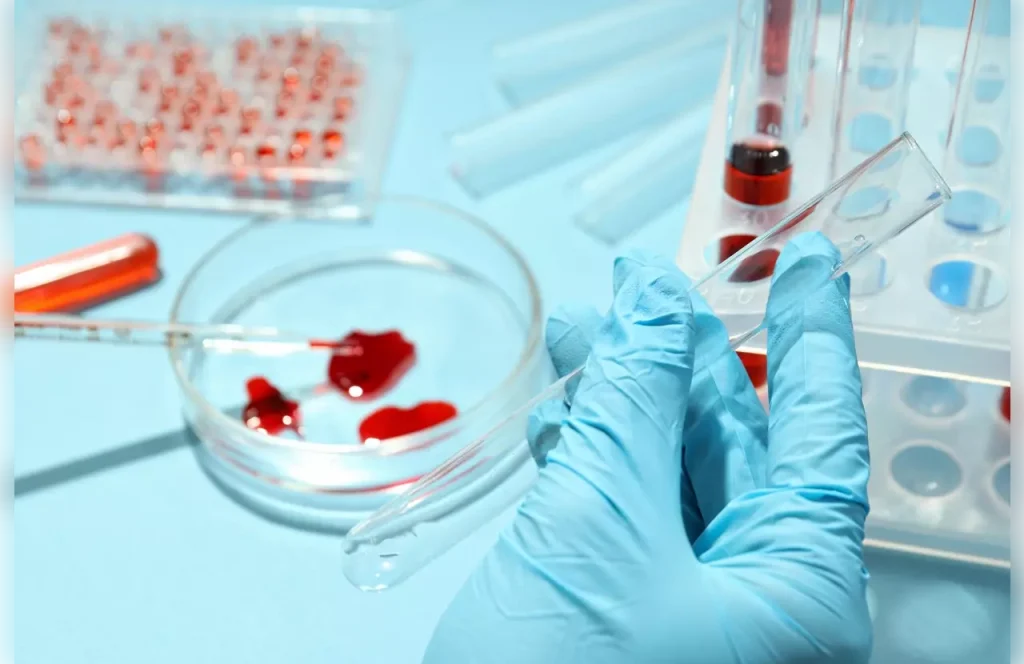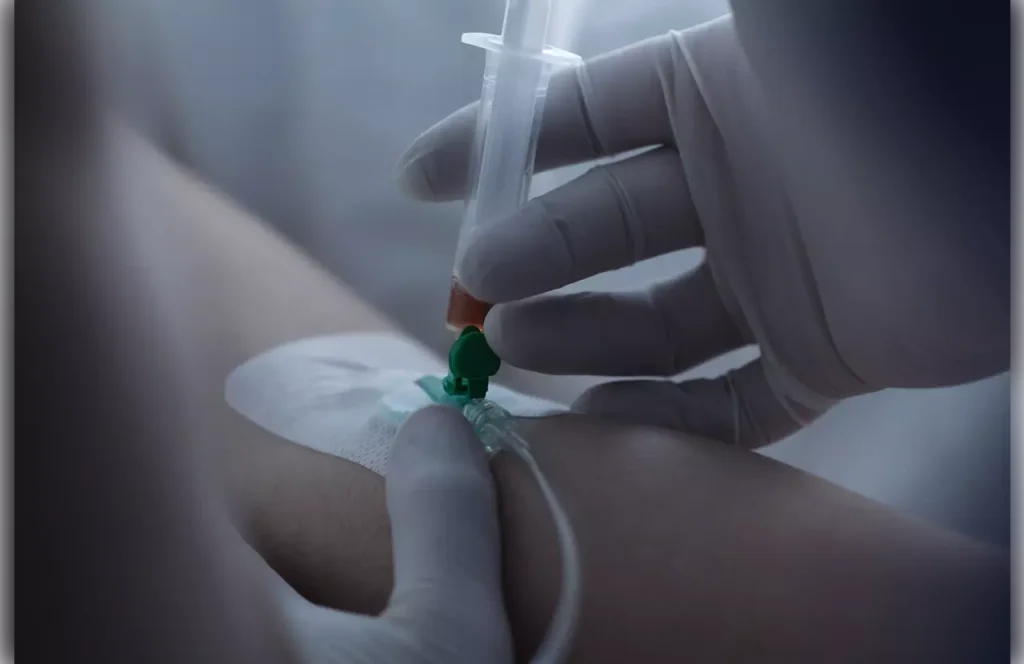
For those with complex blood cancers or severe autoimmune diseases, autologous hematopoietic stem cell transplant (HSCT) is a hopeful treatment. It uses the patient’s own cells to rebuild their blood and immune system.
At Liv Hospital, we use autologous HSCT for tailored treatments. We collect and store a patient’s stem cells. Then, we reintroduce them after treatment, giving patients new hope and longer remissions.

Autologous stem cell transplantation uses a patient’s own stem cells. It’s a treatment that’s getting more attention for its ability to help with many health issues.
This procedure takes a patient’s stem cells, stores them, and then puts them back in the patient. It’s mainly used for some cancers and autoimmune diseases.
Using the patient’s own stem cells means there’s less chance of graft-versus-host disease (GVHD). GVHD is a big problem with other types of transplants.
The word “autologous” comes from Greek. “Autos” means “self” and “logos” means “relation.” In medicine, autologous means something comes from the same person.
In stem cell transplants, it means the cells come from and go back to the same person. This makes the treatment very personal.
The main difference is where the stem cells come from. Autologous transplants use the patient’s own cells. Allogeneic transplants use cells from someone else.
Knowing these differences helps patients and doctors choose the best treatment.

Learning about hematopoietic stem cells is key to understanding autologous hematopoietic stem cell transplantation (HSCT). These stem cells are vital for making blood cells. They can self-renew and differentiate into different blood cell types, like red and white blood cells, and platelets.
Stem cells can self-renew and turn into specialized cells. Hematopoietic stem cells, in particular, create all blood cell types. This process, called hematopoiesis, is controlled by many factors.
These stem cells have special traits:
Hematopoietic stem cells work by going to specific spots in the bone marrow. There, they get signals that help them self-renew and differentiate. The bone marrow environment is essential for their survival and growth.
The process of hematopoiesis involves many cell types and molecules working together. Stem cells turn into progenitor cells, which then become all blood cell types. This complex process is vital for the body’s blood cell needs and responding to demand changes.
In summary, hematopoietic stem cells are critical for blood cell production. Their unique abilities make them a key part of autologous HSCT. By understanding how these cells work and are controlled, we can better see how this treatment saves lives.
Autologous HSCT is a key treatment for serious diseases. It helps with blood cancers, solid tumors, and autoimmune disorders. This method has shown great promise in treating these conditions.
Autologous HSCT is a common treatment for lymphoma and multiple myeloma. It’s used for patients who have relapsed or are at high risk. The treatment uses the patient’s own stem cells, collected, stored, and then reinfused after chemotherapy.
Key benefits for lymphoma patients include:
For multiple myeloma, a cancer of plasma cells, autologous HSCT is also vital. It has been shown to improve response rates and survival in eligible patients.
Autologous HSCT is not just for blood cancers. Some solid tumors can also benefit from it. These include:
The success of autologous HSCT in solid tumors depends on several factors. These include the tumor’s response to chemotherapy and the patient’s health.
Preparing for autologous stem cell transplantation is a big step. It can feel complex and overwhelming. But, it’s key to ensure the best results for patients going through autologous HSCT.
The first step is to check a patient’s health, medical history, and disease status. Eligibility criteria look at age, how well the patient can function, organ health, and past treatments.
We do a detailed medical history and physical check-up. This helps spot any risks or complications that might happen during the transplant. It helps us see if a patient is right for autologous HSCT.
Pre-transplant testing is a detailed process. It includes lab tests, imaging, and other diagnostic steps. These tests check the patient’s health and find any issues that might affect the transplant’s success.
We also focus on the mental and practical side of preparing for autologous HSCT. This includes counseling, teaching about the transplant, and support for patients and their families.
Emotional support is very important during this time. Patients might feel anxious, scared, or unsure about their treatment. We aim to create a supportive space that tackles these feelings and boosts confidence and readiness for the transplant.
By thoroughly evaluating and preparing patients for autologous HSCT, we aim to enhance their chances of a good outcome. This improves their quality of life.
The autologous stem cell transplant process is complex. It involves several steps from mobilizing stem cells to reinfusing them. A team of healthcare experts works together to make sure it goes well.
Stem cell mobilization is the first key step. It gets stem cells from the bone marrow into the blood. We use growth factors and sometimes chemotherapy to do this.
The right mobilization method depends on the patient’s disease, past treatments, and health. Getting enough stem cells is very important for a good transplant.
After mobilizing stem cells, we collect them through apheresis. This process takes blood, separates stem cells, and returns the rest to the patient. It uses a machine and can take hours.
In some cases, we might also use bone marrow harvest. This is a surgery to take bone marrow from the hip bones under anesthesia.
“Apheresis is a key step in the autologous stem cell transplant process, allowing us to collect the necessary stem cells for reinfusion.”
After collecting, we prepare the stem cells for freezing. We mix them with a solution to protect them during freezing. Then, we freeze them carefully to keep them alive.
The frozen stem cells are stored in liquid nitrogen until needed. Keeping them at the right temperature is very important.
| Step | Description | Key Considerations |
|---|---|---|
| Stem Cell Mobilization | Stimulating bone marrow to release stem cells into bloodstream | Choice of mobilization regimen, patient health status |
| Apheresis | Collecting stem cells from bloodstream | Duration of procedure, patient comfort |
| Cryopreservation | Freezing and storing stem cells | Cryoprotectant solution, storage conditions |
Understanding these steps shows how detailed and careful the autologous stem cell transplant process is. Each step is vital for the treatment’s success.
Before an autologous HSCT, conditioning therapy is given. It includes high-dose chemotherapy and/or radiation therapy. This step is key to a successful transplant. It kills cancer cells and weakens the immune system to prevent stem cell rejection.
High-dose chemotherapy is a main part of conditioning therapy. It aims to get rid of any remaining cancer cells. The chemotherapy used depends on the cancer type, the patient’s health, and past treatments.
Some common chemotherapy agents in conditioning regimens are:
| Chemotherapy Agent | Commonly Treated Cancers | Notable Side Effects |
|---|---|---|
| Melphalan | Multiple Myeloma | Mucositis, Gastrointestinal Toxicity |
| Busulfan | Various Hematologic Malignancies | Hepatic Veno-Occlusive Disease, Seizures |
| Carmustine (BCNU) | Lymphoma, Brain Tumors | Pulmonary Toxicity, Hepatotoxicity |
Radiation therapy may be added to the conditioning regimen. It can be used alone or with chemotherapy. Total Body Irradiation (TBI) is a common method. It delivers radiation to the whole body.
Using radiation therapy has several benefits. It effectively kills cancer cells, including those in hard-to-reach places. It also weakens the immune system, lowering the chance of graft rejection.
We carefully choose the conditioning therapy for each patient. We tailor it to their needs and health. Our goal is to kill cancer cells while protecting healthy tissues.
Reinfusing stem cells is a key part of the autologous HSCT procedure. The stem cells collected and frozen earlier are thawed and given back to the patient. This marks a big step in the treatment.
Getting ready for the reinfusion day involves several steps. Patients are advised to drink lots of water and might get pre-medication to avoid reactions. The frozen stem cells are thawed and checked to make sure they’re good to go.
On the day of the reinfusion, patients are watched closely. Their vital signs are checked often. The infusion itself is quick, taking a few minutes to a couple of hours, depending on the situation.
During the infusion, the thawed stem cells are given through a special catheter. Patients might feel a bit cold, but this feeling goes away soon.
The infusion is done slowly and carefully to avoid any bad reactions. The medical team keeps a close eye on the patient, ready to handle any problems.
After the infusion, patients are watched for any bad reactions. This includes checking their vital signs and looking for signs of reactions, like fever or shortness of breath.
| Monitoring Aspect | Description | Duration |
|---|---|---|
| Vital Signs | Checking temperature, blood pressure, heart rate, and oxygen saturation | Several hours post-infusion |
| Infusion Reactions | Watching for signs of reaction such as fever, chills, or shortness of breath | Throughout and after infusion |
| Blood Count Recovery | Monitoring the recovery of blood cell counts | Several weeks post-transplant |
Knowing how to recover after an auto stem cell transplant is key. It affects your health for a long time. The recovery has many parts that doctors watch closely.
The neutropenic phase is a big challenge. It’s when you have fewer neutrophils, which fight infections. This makes you more likely to get sick, so you need close monitoring and preventive measures.
To lower this risk, we use several methods, including:
Engraftment is when the new stem cells start making blood cells. It’s a key moment in recovery. You’ll see your blood counts, like neutrophils and platelets, go up.
| Recovery Milestone | Typical Timeline | Indicators |
|---|---|---|
| Neutrophil Recovery | 10-14 days post-transplant | ANC > 500 cells/ µL |
| Platelet Recovery | Several weeks post-transplant | Platelet count > 20,000/ µL without transfusions |
Recovery time varies, but most see big improvements in a few months. Full recovery can take a year or more. It’s important to keep up with follow-up care.
Follow-up care includes:
Understanding the recovery process and following up with care can improve your life after a transplant.
Autologous HSCT is a treatment for some medical conditions. It has risks that patients should know about. Knowing these risks helps patients make informed choices.
Autologous HSCT can cause short-term side effects. These can be mild or severe. Some common side effects include:
We use different ways to manage these side effects. This helps patients feel better and avoid more serious problems. We give medication for nausea and help prevent infections. We also make sure patients get the nutrients they need.
Long-term effects of autologous HSCT can affect a patient’s life a lot. These effects include:
| Complication | Surveillance Strategy |
|---|---|
| Secondary malignancies | Regular follow-up with hematologist/oncologist, annual screening as recommended |
| Organ dysfunction | Monitoring of organ function tests (e.g., cardiac echo, pulmonary function tests) |
| Immunosuppression | Prophylactic antibiotics, vaccinations as recommended by guidelines |
Keeping a patient’s quality of life good after autologous HSCT is very important. We look at physical recovery, mental health, and if they can do things they did before the transplant.
Supportive care is key to improving quality of life. This includes mental support, rehabilitation, and nutrition advice.
By knowing the risks and complications of autologous HSCT, we can take better care of patients. We provide all the support they need during their treatment.
The success of autologous stem cell transplantation depends on many factors. It’s a key treatment for some cancers and autoimmune diseases. Knowing how well it works is important for everyone involved.
Many things can affect how well a stem cell transplant works. These include the disease type and stage, the patient’s age and health, and the treatment before the transplant. The quality of the stem cells and how they are stored also matter a lot.
Disease type and status at transplant time greatly affect success. Patients with diseases that respond well to treatment tend to do better. Choosing the right patients is key to success.
Success rates differ for each disease treated with auto-HSCT. For example, in multiple myeloma, survival rates are 50% to 80% at 5 years. In lymphoma, auto-HSCT can control the disease for many patients.
A study found that about 55% of patients with relapsed or refractory Hodgkin lymphoma survived 5 years. For multiple myeloma, survival without disease progression has improved with new treatments and care.
Long-term survival and staying disease-free are important for judging transplant success. Overall survival (OS) and progression-free survival (PFS) are key measures. OS is the time from transplant to death from any cause. PFS is the time from transplant to disease progression or death.
Looking at these outcomes helps doctors understand how well the transplant works. It helps them make better decisions for patients. It also helps compare treatments and find ways to improve.
Autologous hematopoietic stem cell transplantation (HSCT) has changed how we treat serious diseases. This includes blood cancers and autoimmune disorders. It has greatly improved patient results, giving hope to those with tough medical conditions.
The future of auto stem cell transplants is bright. Ongoing research is making this treatment even better. We’re seeing improvements in how stem cells are mobilized, the treatments before and after transplant, and care after transplant.
As medicine keeps getting better, autologous HSCT will likely play a bigger role. It might become a common treatment for more diseases. New technologies and therapies will be key in making auto stem cell transplants more effective and tailored to each patient’s needs.
An auto stem cell transplant is a procedure where a patient’s stem cells are collected. They are then stored and reinfused after high-dose chemotherapy or radiation.
“Autologous” means using a patient’s own cells for transplantation. This is different from allogeneic, where cells are donated from another person.
Autologous HSCT involves several steps. First, stem cells are mobilized and collected. Then, they are frozen and stored. Next, the patient undergoes conditioning therapy. After that, the stem cells are reinfused to rebuild the blood and immune system.
Autologous HSCT treats blood cancers like lymphoma and multiple myeloma. It also treats certain solid tumors and autoimmune disorders. New uses are being explored.
Conditioning therapy uses high-dose chemotherapy and/or radiation. It kills cancer cells or diseased cells before the healthy stem cells are reinfused.
Recovery starts with a neutropenic period, where the patient is at risk for infections. Then, the stem cells start producing new blood cells. The long-term recovery phase requires ongoing care.
Risks include infections and organ toxicity in the short term. Long-term risks include secondary cancers or organ dysfunction. Quality of life can also be affected.
Success depends on the disease, patient’s health, and transplant techniques. Outcomes are measured by disease-free survival and overall survival.
Autologous HSCT is a major advancement in treating certain cancers and diseases. It offers a chance for cure or long-term control for patients with limited options.
Autologous hematopoietic stem cell transplantation uses a patient’s own stem cells. These stem cells can become all types of blood cells.
Autologous HSCT avoids graft-versus-host disease (GVHD). GVHD occurs when the donor’s immune cells attack the recipient’s tissues.
Subscribe to our e-newsletter to stay informed about the latest innovations in the world of health and exclusive offers!
WhatsApp us